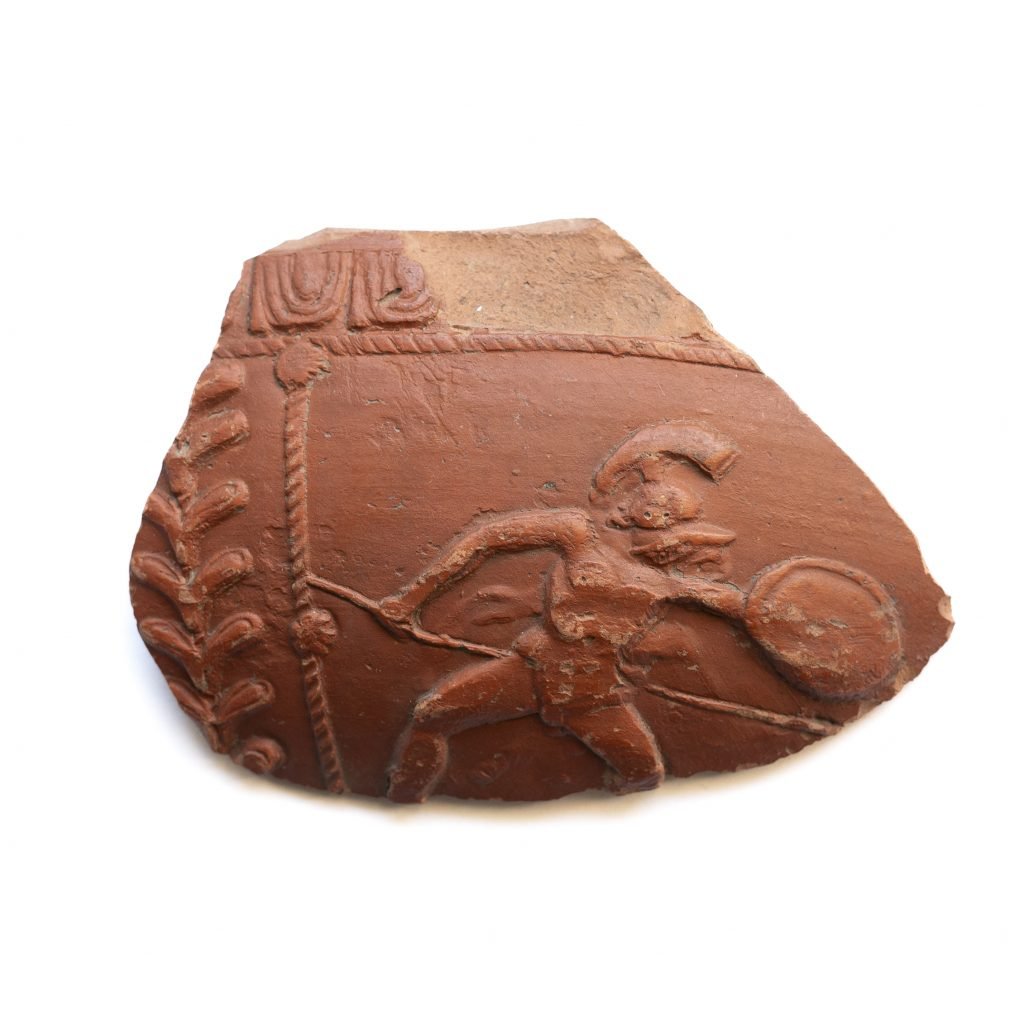
17 Nov Gladiator Figurine That Once Adorned a Roman Knife Goes on View
Source Credit: Content and images from Artnet News. Read the original article - https://news.artnet.com/art-world/gladiator-figurine-knife-handle-on-view-2570823
With the premier of Ridley Scott’s Gladiator II fast approaching, English Heritage has made the timely announcement that it will display a Roman knife handle cast in the shape of a gladiator.
The knife handle, which is made from a copper alloy, was discovered several years ago in a river alongside Hadrian’s Wall, the 70-mile-long structured that made up the Roman empire’s northern-most frontier for 300 years. The site stands close to Corbridge, once a thriving Roman town that amateur archaeologists rediscovered in the mid-19th century.

Corbridge roman town is an English Heritage site that was discovered in the 19th-century. Photo: English Heritage.
The gladiator carved on the knife handle is a secutor, Latin for “chaser,” a class of fighter that carried a heavy shield and a short sword. The secutor is left-handed, a trait that was often considered unlucky in Roman society. This detail has led scholars to speculate that the figurine may refer to a specific individual given some gladiators learned how to fight left-handed which granted them an advantage.
“It is rare to find a piece of gladiator memorabilia in Britain,” said Frances McIntosh, English Heritage’s collections curator at Hadrian’s Wall. “This beautifully made knife handle is a testament to how pervasive this celebrity culture was, reaching all the way to Hadrian’s Wall at the very edge of the Roman Empire.”

The gladiator-shaped knife handle is left-handed. Photo: Phil Wilkinson / English Heritage.
Gladiatorial fights began in the 3rd-century B.C.E. to commemorate the funerals of Roman aristocrats and gradually became a common form of entertainment supported by purpose built amphitheaters. Though gladiator fights were less popular in Roman Britain than in other provinces, the Romans still built dedicated amphitheaters for these spectacles in Silchester, Cirencester, and Dorchester, which was originally a Neolithic henge site.
Accordingly, there is widespread evidence of the presence of gladiatorial culture in Roman Britain. This includes gladiatorial combat depicted on glassware and Samian pottery, a type of red-gloss high-quality pottery made in Britain. One exhibit that is on display in Corbridge shows a leopard painted on piece of glass, believed to be a fragment of an animal hunt. Known as a venatio, these hunts often accompanied gladiatorial fights in a day’s program.

A shard of Samian pottery showing a gladiator. Photo: Phil Wilkinson / English Heritage.
“Despite being enslaved and socially outcast due to their profession, gladiators could become huge celebrities,” said McIntosh. “The phenomenon [of gladiators] inspired the creation of sporting memorabilia, such as decorated ceramics and glass cups, lamps and figurines.
English Heritage plans to display the gladiator handle at Corbridge Roman Town in 2025.
The display will coincide with “Gladiators of Britain,” an exhibition launched by the British Museum in partnership with Colchester + Ipswich Museums that is set to tour the U.K. in 2025. The show will explore Roman culture specific to each region, in addition to displaying gladiatorial armor, sculpture, and pottery at each venue.
Source Credit: Content and images from Artnet News. Read the original article - https://news.artnet.com/art-world/gladiator-figurine-knife-handle-on-view-2570823

